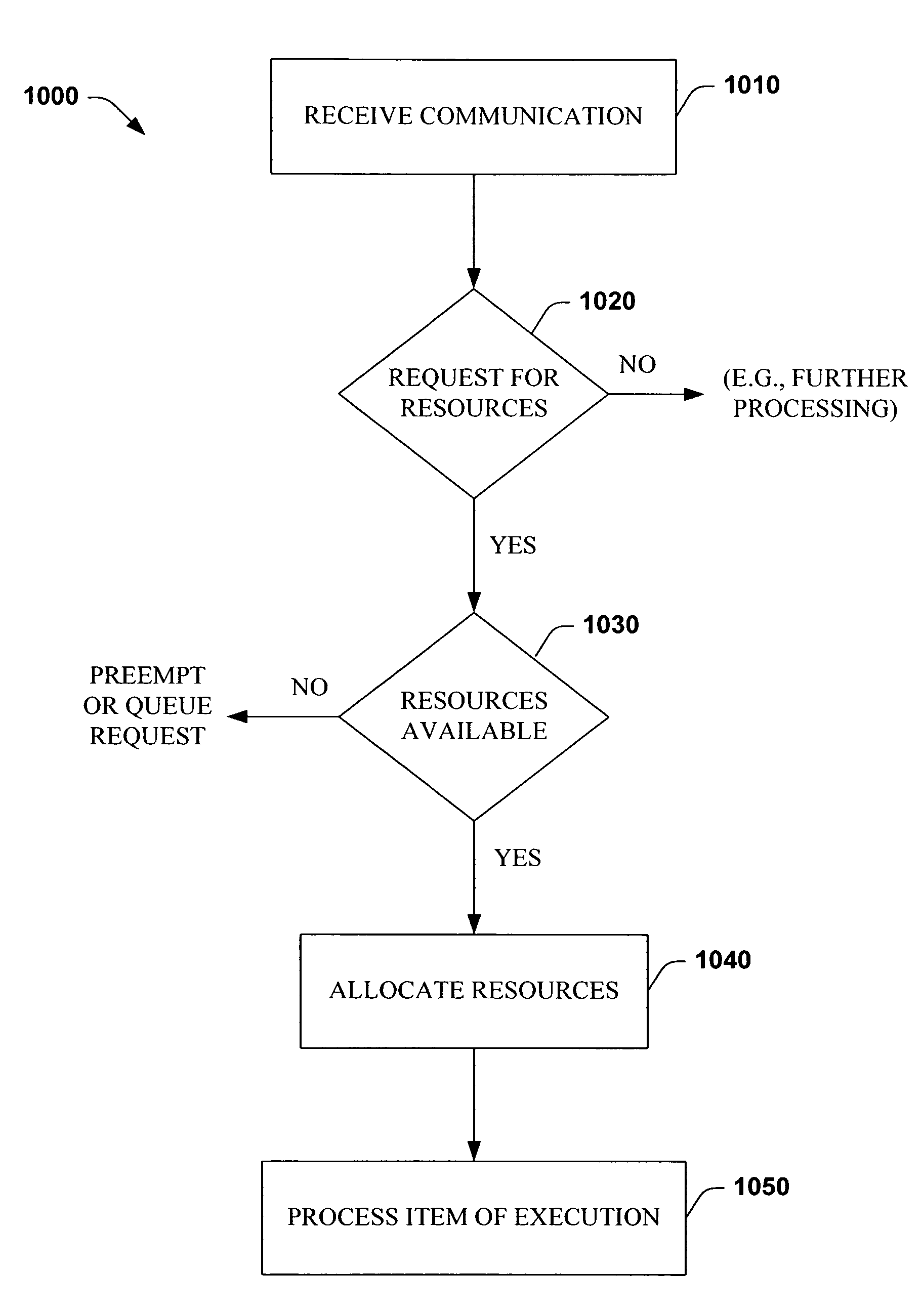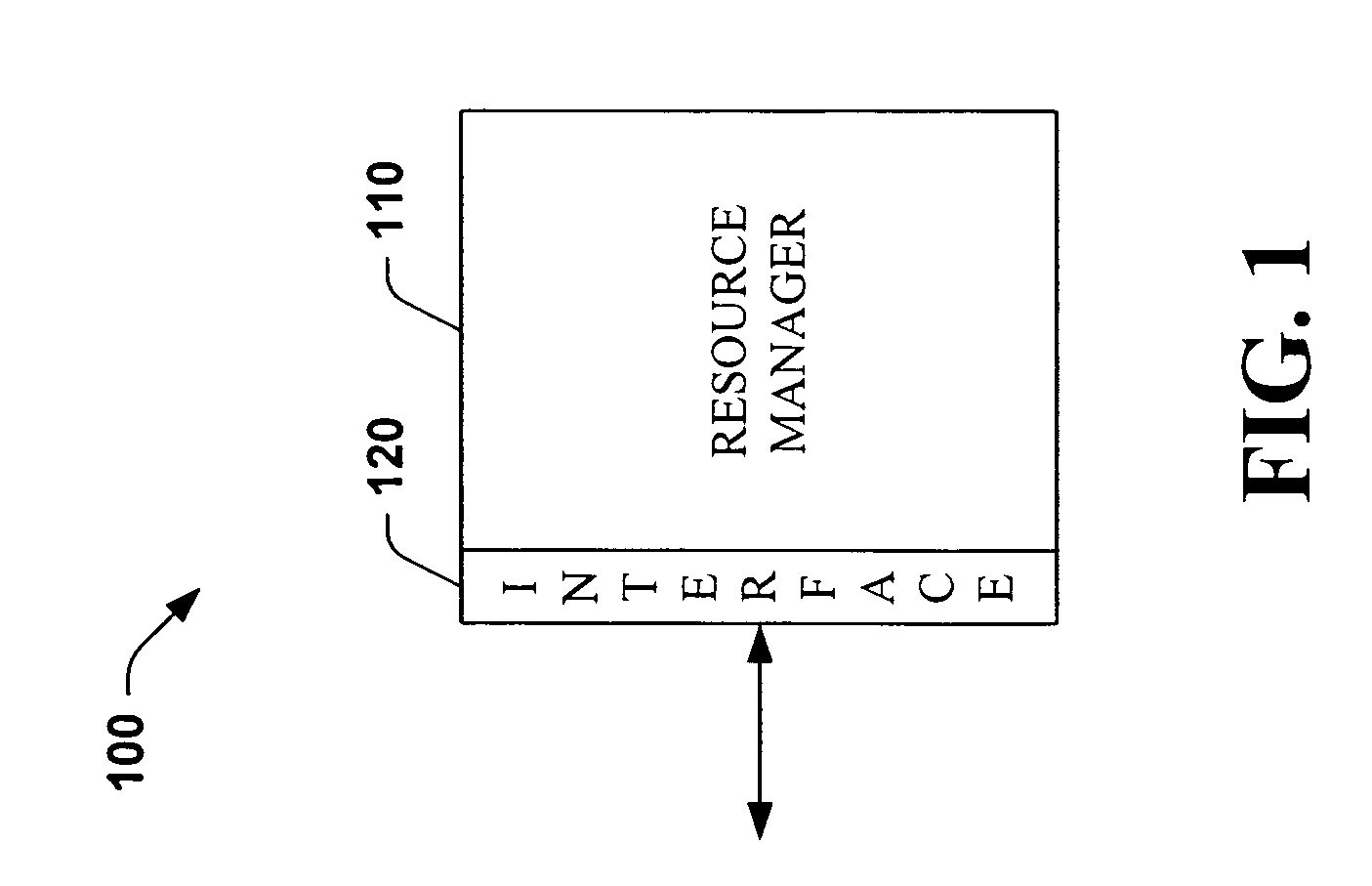Systems and methods that manage processing resources
a processing resource and management system technology, applied in the field of computer processing, can solve the problems of affecting the responsiveness of the system under all circumstances, affecting the responsiveness of the system, and affecting the user's experience, etc., and achieve the effect of reducing the consumption of processing resources
- Summary
- Abstract
- Description
- Claims
- Application Information
AI Technical Summary
Benefits of technology
Problems solved by technology
Method used
Image
Examples
Embodiment Construction
[0031]The present invention relates to systems and methods that consider time, parallelism and preemption in a computing environment through sends, receives, and execution context. In general, scheduling of execution units occurs based on communication (rather than time slicing), which provides for a “free running” (clockless) port-based approach to managing processing resources, for example, by an Operating System (OS). This approach can enable a processor to transition to a reduced power consumption state when its processing resources are not requested. When a client request for the processing resources is transmitted to an allocated port, it can be queued and subsequently utilized to allocate processing resources. A communication (e.g., with the location of memory, a context of execution, etc.) can then be sent to a reply channel or the request can be preempted in order to mitigate consumption of processing resources.
[0032]As utilized in this application, terms “component,”“syste...
PUM
 Login to View More
Login to View More Abstract
Description
Claims
Application Information
 Login to View More
Login to View More - R&D
- Intellectual Property
- Life Sciences
- Materials
- Tech Scout
- Unparalleled Data Quality
- Higher Quality Content
- 60% Fewer Hallucinations
Browse by: Latest US Patents, China's latest patents, Technical Efficacy Thesaurus, Application Domain, Technology Topic, Popular Technical Reports.
© 2025 PatSnap. All rights reserved.Legal|Privacy policy|Modern Slavery Act Transparency Statement|Sitemap|About US| Contact US: help@patsnap.com



